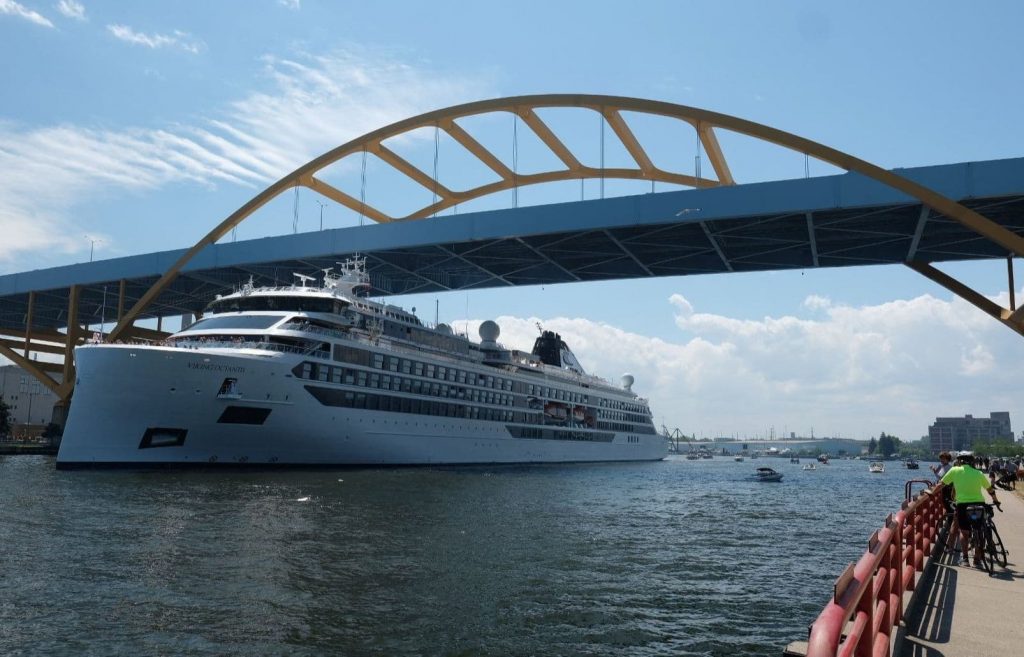Cold weather or warm, morning or night — there’s one activity that’s constant year-round at Lakeshore State Park, and that’s ship-watching.
Because LSP is so close to Port Milwaukee, it offers a terrific vantage point for viewing vessels that come and go. Bring your folding chair and perhaps a set of binoculars, and you can spot a variety of freighters, barges and cruise ships making a stop to unload cargo, pick up cargo, or do both. And in the case of cruise ships, they’ll be bringing visitors, too.
Port Milwaukee is a true 24/7, 365-day port. We have vessel activity potentially every day throughout the year.
Adam Tindall Schlicht
The ship-watching activity is increasing — last year, 400 vessels visited Port Milwaukee, up from 349 in 2020. “Port Milwaukee is a true 24/7, 365-day port. We have vessel activity potentially every day throughout the year,” said Port Milwaukee director Adam Tindall Schlicht.
Schlicht explained that there are four main types of vessels visiting Port Milwaukee:
Tugs or tug-and-barge combinations, which help large vessels operate safely or carry cargo to or from the port. Many of these are built to operate on the Great Lakes or may be traveling from or to the Mississippi River.
A “laker,” which is a U.S. or Canadian vessel specifically designed for the Great Lakes. These are some of the largest vessels on the Great Lakes. Along with barges, they’re also the most common at the port.
A “saltie,” an international ocean-going vessel that enters the Great Lakes through the St. Lawrence Seaway. They typically visit April through January.
International cruise ships, the newest type of vessel at Port Milwaukee. This year alone Milwaukee is expecting 33 cruise ships carrying well over 10,000 passengers, Schlicht said.
Import/export cargo includes salt, fertilizer, steel, cement, grain, limestone, liquid methane and lumber, to name a few. “Our economic role cannot be understated,” Schlicht said. “The vessel activity and the cargo that we handle year-round generate over $100 million in economic impact each year.”
Want to know more about the vessels you’re spotting?
Here are three resources Schlicht recommends:
Port Milwaukee’s real-time vessel tracker, portmilwaukee.com/vesseltracker. This updates in real time the information about vessels coming and going. (The Port Milwaukee website, portmilwaukee.com, has information about the port, as well.)
Board Nerd, boatnerd.com, a website that monitors vessel activity across the Great Lakes, along with information about their history and fun facts.
Wisconsin Marine Historical Society, wmhs.org. “If you’re looking for more of that historical context – what is that ship, what is her service, what is she traditionally carrying? — Wisconsin Marine Historical Society is a fabulous resource.”

If you’re looking for more of that historical context – what is that ship, what is her service, what is she traditionally carrying? Wisconsin Marine Historical Society is a fabulous resource.
Wisconsin Marine Historical Society